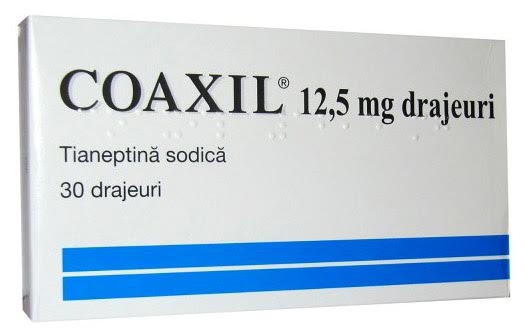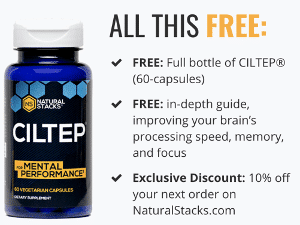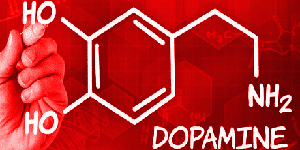Table of Contents
Tianeptine for Social Anxiety
Tianeptine is useful for social anxiety for many reasons. It has a favourable side effect profile. Unlike other drugs prescribed for anxiety-like benzodiazepines, it’s non-impairing. Tianeptine also elevates mood. The increased positive effect seems to improve social interactions. (Or conversely, if you’re obviously depressed, it can make for some uncomfortable social encounters.)
In the United States, Tianeptine is an unconventional treatment because it’s not FDA approved. Tianeptine is a potent tricyclic antidepressant that must be prescribed by a doctor in Europe. Tianeptine is in a legal grey area in the US, because it’s marketed and sold as a nootropic or nutraceutical. But it’s a potent drug that should probably be prescribed rather than purchased over-the-counter.
How Social Anxiety Develops
Individuals with social anxiety (SA) are invested in the impression that they make. They place a large importance on being socially appraised in a positive light. SA often involves over-activation of the sympathetic response or hypervigilance in social situations. High-anxiety individuals tend to over-focus on themselves and are sensitized to social signals. This state of enhanced sensitivity can impair social performance.
Social anxiety (SA) can be debilitating. Yet, there are some overlooked positive aspects to SA. Individuals with SA are more attentive to other peoples states of mind. One study reported enhanced empathy in high-SA individuals. More anxious states increase awareness of the environment and help in reading social cues. But excessive sensitivity to social signals can also impair social behavior.

Benefits of Tianeptine for Social Anxiety
Tianeptine has grown in popularity over the last five years. It’s now a bestselling product at nootropics vendors like BlueBrainBoost.
There are good reasons to think that tianeptine alleviates social anxiety.
The mood-elevating effects of tianeptine are helpful if low mood makes social interactions uncomfortable.
Tianeptine is an opioid, and opioids have anti-anxiety (anxiolytic) effects
Unlike benzodiazepines, Tianeptine is non-impairing
Tianeptine reverses stress-induced changes in the brain that may hinder social cognition
Anecdotal reports about the use if tianeptine for SA have been favorable
Tianeptine Risks
There are some disadvantages to tianeptine.
Tianeptine’s chemical structure Tianeptine has a rapid half-life and only lasts 3 hours. Tianeptine’s rate of elimination may thus require re-dosing throughout the day. Case reports have described tianeptine dependence, abuse, and withdrawal. Tianeptine activates the mu-opioid receptor in the brain. Painkillers like oxycodone are also mu-opioid agonists. Opioids are some of the most widely abused substances.
But tianeptine does not carry the same abuse potential as many other opioids. Tianeptine’s recreational potential is limited. Excessive dosages only result in a mild “high” without euphoria. The typical dosage is 12.5mg – 25mg.
Tianeptine vs Other Anti-Anxiety Medications
Benzodiazepines like Xanax – affect GABA, the major inhibitory neurotransmitter
SSRIs like Zoloft – increase concentrations of serotonin at the synapse (connection between neurons)
MAOIs like Parnate – Increase serotonin, norepinephrine, and dopamine by inhibiting their metabolism
Antihistamines like Remeron – block the histamine receptor and the serotonin 5HT2A receptor. Remeron also disinhibits serotonin and norepinephrine release
Atypical antipsychotics like Risperidone
From the laundry list of drugs above, it’s easy to see that there’s no magic bullet for SA. Many of these drugs have major side effects.
Benzodiazepines predispose to memory loss and cognitive impairment. SSRIs cause sexual dysfunction and in some cases actually, exacerbate SA. A study hypothesized that too much serotonin (rather than too little as thought before) contributes to SA.
MAOIs are considered effective even for treatment-resistant SA. Phenelzine affects both GABA (by inhibiting GABA transaminase), as well as monoamines. The side effects of this class of medication are serious but overstated. Fears about a hypertensive crisis from consuming tyramine are overblown. While it is necessary to restrict tyramine, carrying nifedipine reduces the risk of a crisis. Nifedipine is a powerful and rapid-acting blood pressure lowering medication.
In contrast to these well-known medications used to treat SA, tianeptine is unknown by physicians in the US. Tianeptine’s mechanism is poorly understood, making it difficult to compare it to other drugs. The most important discovery about tianeptine is its binding affinity for mu-opioid receptors.
All considered, tianeptine is an effective and well-tolerated medication for SA. It also has the potential to restore brain function after severe and chronic stress. But tianeptine has the disadvantage of being unknown by physicians outside of Europe. This lack of physician oversight leads individuals with SA to self-medicate, which is not ideal.
Tianeptine Side Effects
Tianeptine side effects are considered mild and tolerable in comparison to many other antidepressants. The incidence of very serious tianeptine side- effects like liver injury and addiction are rare.
For example, the rate of tianeptine abuse is 0.1% – 0.3% among patients prescribed tianeptine in France. In comparison, the CDC estimates that there are over 5 million prescription painkiller users in the United States, accounting for 1.6% of the entire US population.
An advantage of tianeptine’s side effect profile is that tianeptine is not sedating, does not induce anticholinergic effects (e.g., dry mouth), and lacks cardiovascular side effects like hypertension 1.
One double-blind, placebo-controlled trial of tianeptine in healthy volunteers reported that tianeptine did not produce orthostatic hypotension (a potentially dangerous drop in blood pressure on standing), increase heart rate, cause ECG changes, alter cardiac conduction time, or impair cardiac output.
Tianeptine is a prescription drug in Europe approved for the treatment of a major depressive disorder. Due to its unregulated status, tianeptine is marketed and sold as a nutraceutical or nootropic drug to individuals without a prescription in the United States.
Antidepressant vs Tianeptine Side Effects
Antidepressant side effects are frequently cited as a common reason for lack of patient compliance. Most patients who discontinue antidepressant therapy do so because of side effect intolerance. Hence, identifying antidepressants with a more favorable side effect burden is an important step in optimizing the treatment of depression.
In general, the side effect burden of antidepressants is ranked as follows:
Monoamine oxidase inhibitors > tricyclics > SNRIs > SSRIs
where monoamine oxidase inhibitors (MAOIs) have the most burdensome side effects. To some extent, side effect tolerability is a question of individual preference. Some patients may not mind observing a tyramine-restricted diet, which is necessary to safely take MAOIs, but be unwilling to tolerate the sexual side effects of SSRIs.
Despite its classification as a tricyclic, tianeptine’s side effect profile is markedly unlike other tricyclic antidepressants (TCA) 2.
Other TCAs are strongly anticholinergic (resulting in dry mouth, constipation, and mild memory impairment). They’re also proconvulsant – they tend to decrease the seizure threshold – as well as sedating, appetite-stimulating, and can cause orthostatic hypotension. Orthostatic hypotension is a potentially dangerous drop in blood pressure that occurs on standing.
Tianeptine lacks the typical side effects of TCAs
Despite tianeptine’s structural similarity to other antidepressants, tianeptine’s distinct mechanism of action partially explains tianeptine’s less severe side effects. The antidepressant effect of TCAs has been attributed to increased serotonin and norepinephrine caused by decreasing the re-uptake (removal) of these neurotransmitters, as well as acetylcholine receptor blockade.
However, Tianeptine’s mechanism of action has remained more elusive. An emerging view is that Tianeptine “works” by activating mu-opioid receptors, modulating glutamate, and reversing stress-induced synaptic remodeling.
Unlike other tricyclics which can induce seizures even at therapeutic doses, Tianeptine has been deemed safe to use in patients with epilepsy. 20

Based on the package insert, Tianeptine is associated with the following adverse effects:
Extrasystole, trembling, tightness of the throat, vomiting, myalgia, precordialgia, nightmares, respiratory, headaches, dizziness, upsets, flatulence, faintness, discomfort, abdominal pain, lumbago, insomnia, asthenia, nausea, dryness of the mouth, anorexia, tachycardia, gastralgia, and drowsiness.
Common Tianeptine Side Effects
- Headache (up to 18%) Common (>1% frequency)
- Dizziness (up to 10%) Common (>1% frequency)
- Insomnia/nightmares (up to 20%) Common (>1% frequency)
- Drowsiness (up to 10%) Common (>1% frequency)
- Dry mouth (up to 20%) Common (>1% frequency)
- Constipation (up to 15%) Common (>1% frequency)
- Nausea Common (>1% frequency)
- Abdominal pain Common (>1% frequency)
- Weight gain (~3%) Common (>1% frequency)
- Agitation Common (>1% frequency)
- Anxiety/irritability Common (>1% frequency)
- Bitter taste Uncommon (0.1-1% frequency)
- Flatulence Uncommon (0.1-1% frequency)
- Gastralgia Uncommon (0.1-1% frequency)
- Blurred vision Uncommon (0.1-1% frequency)
- Muscle aches Uncommon (0.1-1% frequency)
- Premature ventricular contractions Uncommon (0.1-1% frequency)
- Micturition disturbances Uncommon (0.1-1% frequency)
- Palpitations Uncommon (0.1-1% frequency)
- Orthostatic hypotension Uncommon (0.1-1% frequency)
- Hot flushes Uncommon (0.1-1% frequency)
- Tremor Uncommon (0.1-1% frequency)
- Hepatitis Rare (<0.1% frequency)
- Hypomania Rare (<0.1% frequency)
- Euphoria Rare (<0.1% frequency)
- ECG changes Rare (<0.1% frequency)
- Pruritus/allergic-type skin reactions Rare (<0.1% frequency)
- Protracted muscle aches Rare (<0.1% frequency)
- General fatigue Rare (<0.1% frequency)
Tianeptine and Hepatotoxicity (Liver Injury)
Perlemuter’s review of antidepressant-induced liver injury[ref]Voican CS, Corruble E, Naveau S, Perlemuter G. Antidepressant-induced liver injury: a review for clinicians. Am J Psychiatry. 2014;171(4):404-15.[/ref] reported that tianeptine, along with iproniazid, nefazodone, phenelzine, imipramine, amitriptyline, duloxetine, bupropion, trazodone, and agomelatine, were associated with a higher risk of liver injury. These drugs (including tianeptine) had a higher hepatotoxic potential in comparison to SSRIs.
Hepatotoxicity (liver failure) is in usually unpredictable and idiosyncratic. Interestingly, it is unrelated to drug dosage.
It usually takes about several days to 6 months after initiating antidepressant therapy for hepatitis to manifest. Antidepressant-induced liver injury, when it involves fulminant liver failure, is life-threatening.
Tianeptine-induced hepatoxicity is rare. Moreover, Perlemuter’s review has been criticized for being limited by publication bias (physicians tend to publish more severe case reports) and failing to account for the prescribing frequency of various antidepressants.
Tianeptine Abuse and Dependence
From 1989 to 2004, 141 cases of tianeptine abuse were reported in France. This corresponds with an incidence of about 0.1-0.3%. In 2007, tianeptine’s manufacturer Servier modified the drug insert due to problems with tianeptine abuse. Tianeptine is restricted in Singapore because of its abuse potential, while France began treating tianeptine as a controlled substance-requiring a secure prescription form like prescription narcotics.
Tianeptine Is a Direct Mu-Opioid Agonist
The abuse potential of tianeptine is almost certainly related to its activation of mu-opioid receptors in the brain. Tianeptine dependence and withdrawal mimics the withdrawal symptoms associated with conventional painkillers, albeit to a lesser degree.
In 2014, Sames D et. al. of Columbia University18 used a radioligand binding assay to characterize tianeptine’s receptor binding affinities. They reported that tianeptine is an efficacious mu-opioid receptor agonist (Ki = 383 +/- 183nM), also affecting delta-opioid receptors to a lesser extent. Tianeptine was inactive at kappa-opioid receptors.
If you’re interested in the pharmacology of tianeptine, Sames’ paper, published in Nature, is an excellent read.
The authors suggest that tianeptine’s anxiolytic and antidepressant effects may be attributed to tianeptine’s opioid binding. Other opioids have been noted to elicit antidepressant effects, and have controversially been used off-label for treatment-resistant depression.
“Doctor shopping” refers to the patient behavior of simultaneously consulting many physicians in a short time span, which is linked to substance abuse. One study reported that tianeptine had a high “doctor shopping indicator” compared to other antidepressants, suggestive of an above-average abuse potential.19
One paper, sensationalistically entitled “Addictive potential of Tianeptine – the threatening reality” (19801742) described 24 male patients who abused tianeptine. The average daily dose was 40 tablets (500 mg) administered intravenously. The authors linked the abuse potential with tianeptine’s opioid activity and dopamine release in the nucleus accumbens. Another study21 found that a single high dose of tianeptine does not induce a psychostimulant effect in healthy volunteers compared to methylphenidate (Ritalin). This result suggests the abuse potential of tianeptine is unlikely to be dopamine-related.
A single administration of a supratherapeutic dose of tianeptine does not induce the psychostimulant effect in young healthy volunteers in contrast to methylphenidate at a therapeutic dose. These findings suggest an absence of psychostimulant liability of tianeptine in a therapeutic situation.21
Tianeptine Dosage
The consensus is that a reasonable tianeptine sulphate dosage is 25mg, or 2x the starting dose of tianeptine sodium.
Keep in mind that the absorption, distribution, and metabolism of tianeptine sulphate are not well-characterized. So the tianeptine sulphate dosage of 25mg is based on anecdotal reports from users, not on hard evidence. Some individuals have used higher tianeptine sulphate dosages without apparent ill-effect, but this practice should not be assumed to be safe.
Tianeptine sulphate is just like Tianeptine sodium, only differing with respect to its counter-ion. Since tianeptine has a carboxylic acid group (COO-), which is negatively charged, a tianeptine salt can be formed with sodium, which is positively charged, forming an overall neutral ionic compound.
Tianeptine sulphate is formed by acidifying tianeptine with hydrogen sulphate (HSO4-, also known as bisulfate). Hydrogen sulphate is a weak acid that protonates the carboxylic acid and the basic nitrogen atom in Tianeptine. Tianeptine cannot be acidified with sulphuric acid because sulphuric acid is an extremely strong acid.
Sulphuric acid is such a strong acid that even after it has lost one hydrogen to protonate a base, the remaining hydrogen is still acidic!
Tianeptine Sulphate Dosage
The standard tianeptine sulphate dosage is 25mg vs 12.5 mg for tianeptine sodium.
Tianeptine Sulphate vs Tianeptine Sodium
What’s the difference between tianeptine sulphate vs tianeptine sodium?
Apart from the obvious chemical difference (discussed above), the significant differences are:
- Stability. Tianeptine sodium is unstable and decomposition occurs in the presence of light, heat and moisture. Tianeptine sulphate appears to be more stable.
- Half-life. Tianeptine sulphate has a longer duration of action (tianeptine sodium only lasts 2-3 hours; tianeptine sulphate lasts all day).
- Potency. To achieve the same effects, roughly twice the tianeptine sulphate dosage is needed.
- Physical properties. Tianeptine sodium is extremely hygroscopic (it absorbs moisture from air); tianeptine sulphate is not hygroscopic.
- Absorption. In this case, tianeptine sulphate’s inefficient absorption and excretion is an asset, because it delays release in a controlled fashion resulting in a longer duration.
Tianeptine Sulphate and Hygroscopicity
Tianeptine sodium is extremely hygroscopic. It will suck moisture from air at an alarming rate. In short, because tianeptine sodium is so hygroscopic, it is cumbersome to store for very long. It begins to degrade the moment it first comes into contact with air. One solution is to use dessicant packets, but your mileage will very.
Dessicant packets are comprised of silicon dioxide, which are even more hygroscopic than tianeptine sodium, which causes moisture to be absorbed by the silicon dioxide instead of tianeptine sodium. Another option is to store tianeptine sodium in a dessicator.
References
Delalleau B, Dulcire C, Le moine P, Kamoun A. Analysis of the side effects of tianeptine. Clin Neuropharmacol. 1988;11 Suppl 2:S83-9.
Delalleau B, Dulcire C, Le moine P, Kamoun A. Analysis of the side effects of tianeptine. Clin Neuropharmacol. 1988;11 Suppl 2:S83-9.
Gassaway MM, Rives ML, Kruegel AC, Javitch JA, Sames D. The atypical antidepressant and neurorestorative agent tianeptine is a μ-opioid receptor agonist. Transl Psychiatry. 2014;4:e411.
Moon J, Jung KH, Shin JW, et al. Safety of tianeptine use in patients with epilepsy. Epilepsy Behav. 2014;34:116-9.
Bernard K, Penelaud PF, Mocaër E, Donazzolo Y. Absence of psychostimulant effects of a supratherapeutic dose of tianeptine: a placebo-controlled study versus methylphenidate in young healthy volunteers. J Clin Psychopharmacol. 2011;31(4):441-8.
Rouby F, Pradel V, Frauger E, et al. Assessment of abuse of tianeptine from a reimbursement database using ‘doctor-shopping’ as an indicator. Fundam Clin Pharmacol. 2012;26(2):286-94.

Dr Chuang is passionate about Nootropic medicine and research, bringing many years of experience to provide the most up to date and accurate information available.
Whether you are seeking a boost in concentration and focus, want to supercharge your memory and learning, or seek to improve your mood or sex life, then count on Dr Chuang for qualified, expert and authoritative comment on Nootropics.









